
[ad_1]

Discounting has long been used to incentivize customers and prospects to make a purchase.
It’s not a new strategy, but it is an effective one—when marketers follow a few best practices.
The problem, though, is oftentimes marketers will offer sitewide discounts to their entire audience—without considering where visitors are in the buyer’s journey.
Sure, that might drum up more sales, but it can hurt your bottom line in the long run.
The solution, then, is to strike a balance between when and how often to use them and which user segment to offer them to.
In this article, I’ll show you 9 different ways you can use discounts to get more sales. Plus, I’ll include alternatives for each tactic if discounting isn’t a viable option.
FREE DOWNLOADABLE BONUS
Want More Conversion Rate Optimization Strategies?
Get access to our free CRO toolkit and skyrocket your organic traffic, on-page conversion rate and more (includes resources not found in the blog post).
Download CRO Toolkit Now →

Table of Contents
1. Nudge New Visitors with a Special Offer
2. Reward Loyal Customers
3. Increase Sales During Holidays
4. Use Early-Bird Discounts for New Products
5. Reduce Abandoned Carts
6. Reward Referrals from Existing Customers
7. Retarget Visitors with a Custom Offer
8. Offer Discounts on Subscriptions
9. Follow Up with Event Attendees
How and When to Use Discounts
Discounts aren’t for everyone.
And I can’t tell you if you should use them or not. But I can tell you how to use them.
There are countless ways to use discounts to get more leads and sales for your online store.
But you need to use them wisely.
Your discounting strategy should always depend on your business goals and the individual visitor. Maybe you want to discount discontinued items to clear out inventory and not to increase revenue.
Let’s have a look at how and when to use discounts, and what the alternatives could be.
1. Nudge New Visitors with a Special Offer
When a visitor first enters your site, they might not be ready to buy.
So offering them a discount code to use right away, isn’t always the best strategy.
Instead of asking new visitors to buy this early into the buyer’s journey, you should ask them for a smaller commitment—like giving you their email address in exchange for a discount code.
Here’s what that might look like:
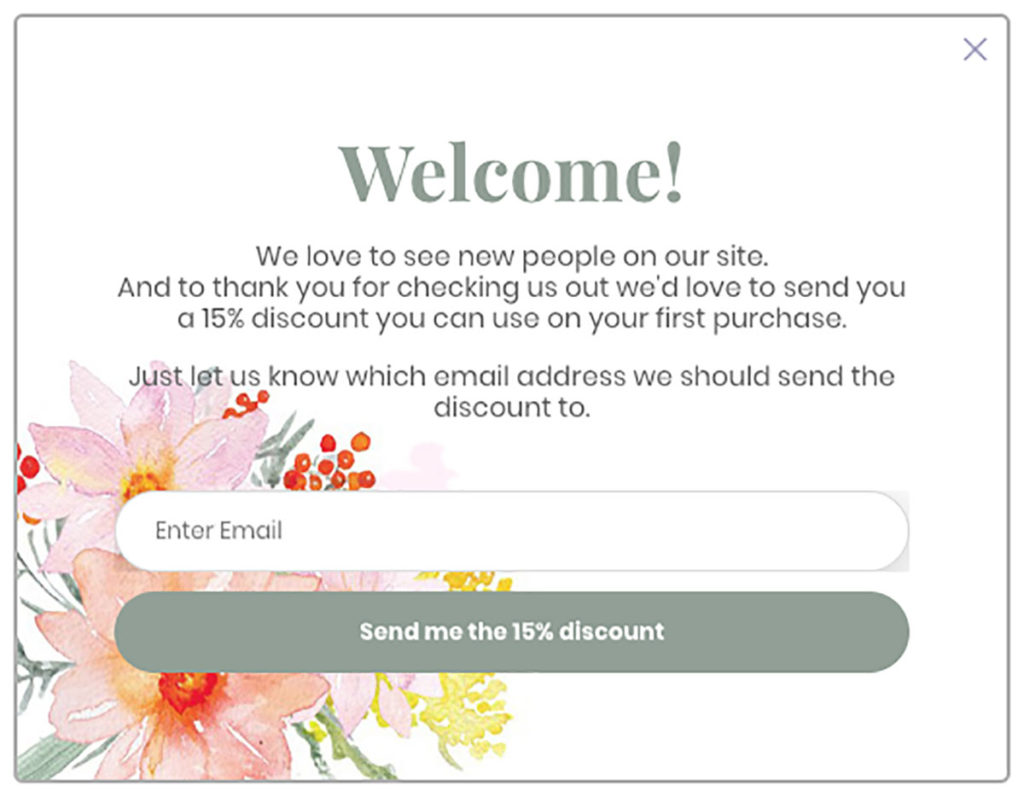
When creating a campaign for new visitors, it’s important to:
- Target a specific visitor segment: To ensure you only offer this discount to new site visitors, place a cookie in new visitors’ browsers. Doing so allows you to track new visitors vs. returning visitors and hide or show campaigns to this segment.
- Personalize the copy: Make sure your target segment know the offer is exclusive to them. This makes the message and offer more relevant which will increase conversions.
- Give people a reason for your discount: If you want people to accept your discount, give them a reason. As Robert Cialdini writes in his book Influence, “People simply like to have reasons for what they do.” The best part is, it works even if the reason is obvious. For instance, it can be as simple as in the example above where visitors get a discount because they’re new visitors. (See: The Copy Machine Study.)
Alternative: If you don’t want to offer discounts to new visitors, you can try to sell them on the value of your newsletter to get their email address.
Here’s an example from A.C. Perchs:

2. Reward Loyal Customers
If you have a loyalty club, you can, and should, use discounts to reward loyal customers.
For example, when a customer spends a certain amount on your site, you can offer them a discount code on their next order as a thank you.
One report shows that 76% of customers want personalized offers based on their purchase history.
So offering rewards based on your members’ previous purchases is a great way to personalize offers.
Here’s an example of how H&M rewards their club members:
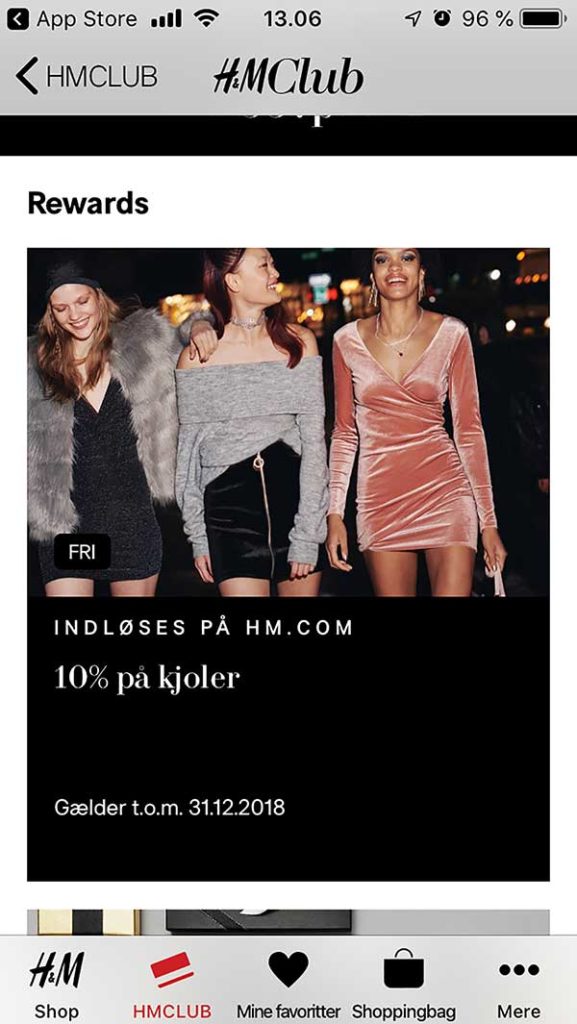
The reward is a 10% discount on all dresses with an expiration date to nudge on-the-fence buyers to take action.
It’s worth mentioning that the value of the rewards depends on the number of points you earn. The more points you get, the bigger the rewards—and the more likely you are to buy again.
Alternative: There’s always an alternative to offering discounts. If you want to reward loyal customers, offer free shipping instead.
H&M also offers free shipping to club members:

3. Increase Sales During Holidays
During specific holidays, many consumers go online to shop for gifts due to an increase in holiday promotions.
So, why not capitalize on the increased traffic during holidays and guide your visitors to relevant offers?
Here’s an example of a Black Friday campaign from Real Coffee:
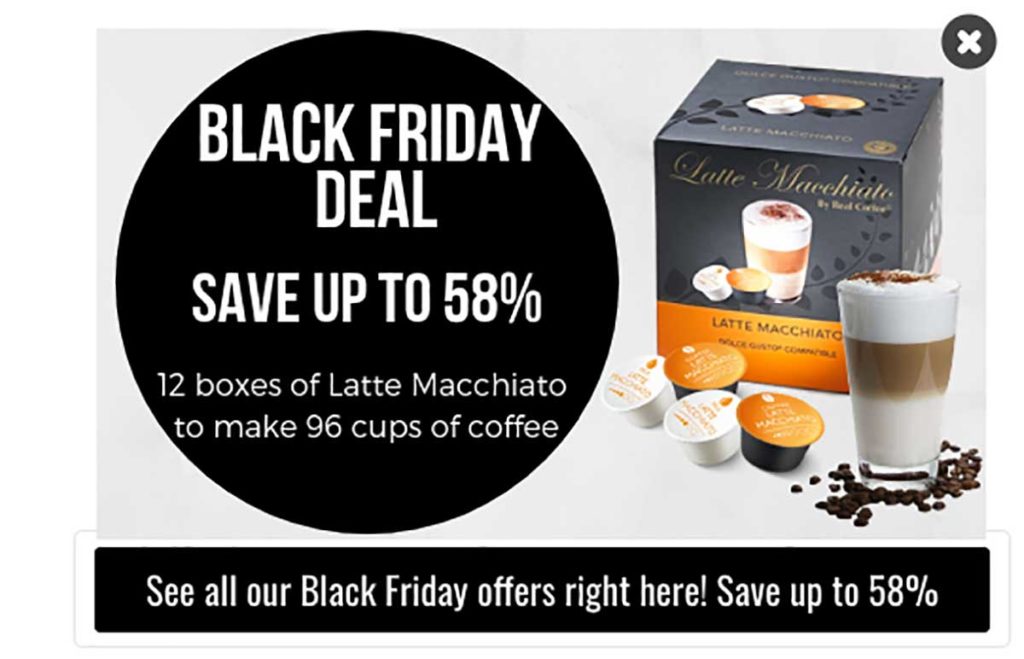
The campaign showed on all pages on the website during Black Friday, except for the actual page with the offers.
That means when you click the campaign, you go directly to a landing page with all the available Black Friday offers.
The page only had Black Friday offers, making it easier for prospects to go through the selection of discounted products and make a decision on which to get.
Alternative: Not all businesses need to offer discounts during holidays to get more sales (far from it). You can also use content upgrades to inspire sales (even if you don’t have a blog). For example, you can offer inspiration for creative dates on Valentine’s Day, free recipes for Thanksgiving, free DIY guides for Christmas decorations, etc.
Offer product recommendations in your free guides and visitors will be more likely to buy from you during the holidays.
4. Use Early-Bird Discounts for New Products
When you launch a new product, you want as many people to buy it as possible, right?
Many online stores promote a pre-order discount on upcoming products for this very reason.
Here’s a good recent example from Red Rooster Coffee Roaster:
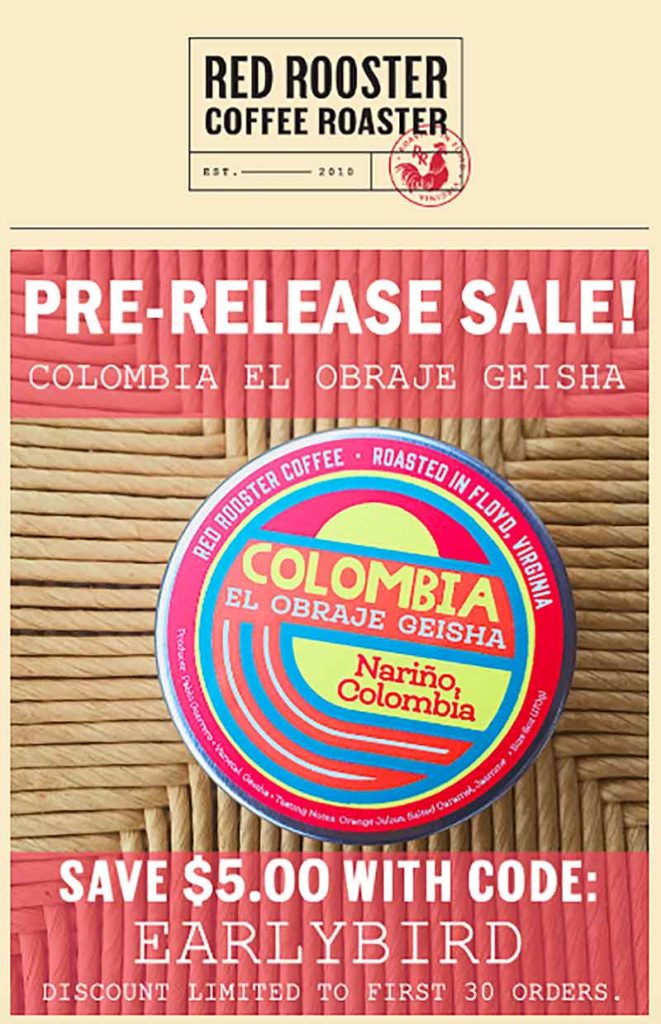
They added scarcity to the email by limiting the discount to the first 30 orders.
By doing so, they make the offer seem more exclusive which drives more traffic to the new product.
It’s important to mention here that you need to be careful when offering discounts on new products.
Discounting a product before it’s launched can devalue it in the prospect’s mind.
So don’t offer large discounts on new products, and make sure that the discount is only a small percentage of the full price of the product.
For example, the price of the coffee from Red Rooster Coffee Roaster is $25.99, so that’s about a 20% discount.
When you discount your products, you need to consider if you want to offer a percentage discount or dollar amounts.
As a rule of thumb, you should go with the option that has the highest perceived value.
So, taking the above example, I would go with the 20% discount because it seems higher than the $5 discount, even though the savings are the same no matter what you choose.
Again, it’s a balance, and it might be worth testing which type of discount works best for your audience and the product you’re discounting.
Alternative: In many cases, it’s enough to use scarcity to get people to pre-order items without a discount. A good strategy is “The few-items-left-tactic” where you add how many items are available to pre-order.
In his book, Theory of Psychological Reactance, Jack Brehm states that when opportunities become less available we lose our freedom of choice. And when our choices are limited or threatened, our need to keep that freedom makes us want the item even more than before. It’s simple psychology.
Here’s an example from Death Wish Coffee:
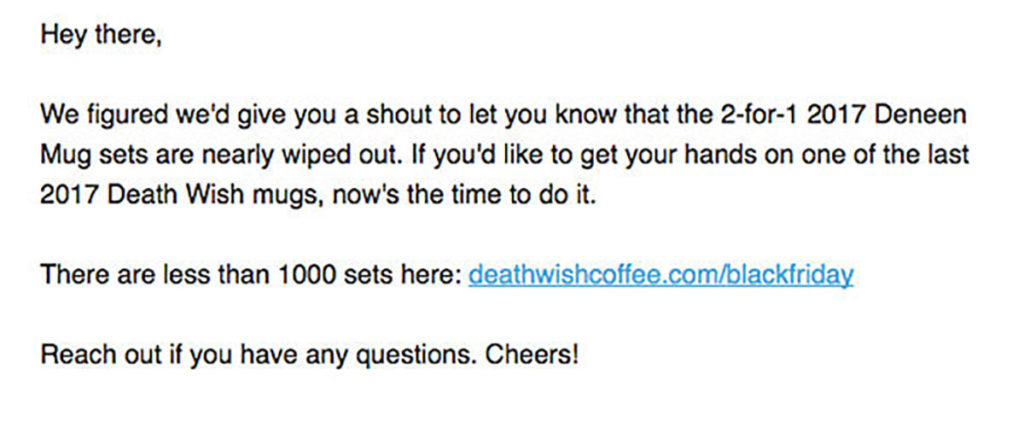
5. Reduce Abandoned Carts
It’s likely you already use this strategy, but I’d be remiss if I didn’t mention it.
Sixty percent of online shoppers abandon their carts because of unexpected extra costs so by offering a discount to abandoning shoppers, you can recover some of that lost revenue.
Here’s how Nicehair uses exit-intent campaigns to reduce cart abandonment:
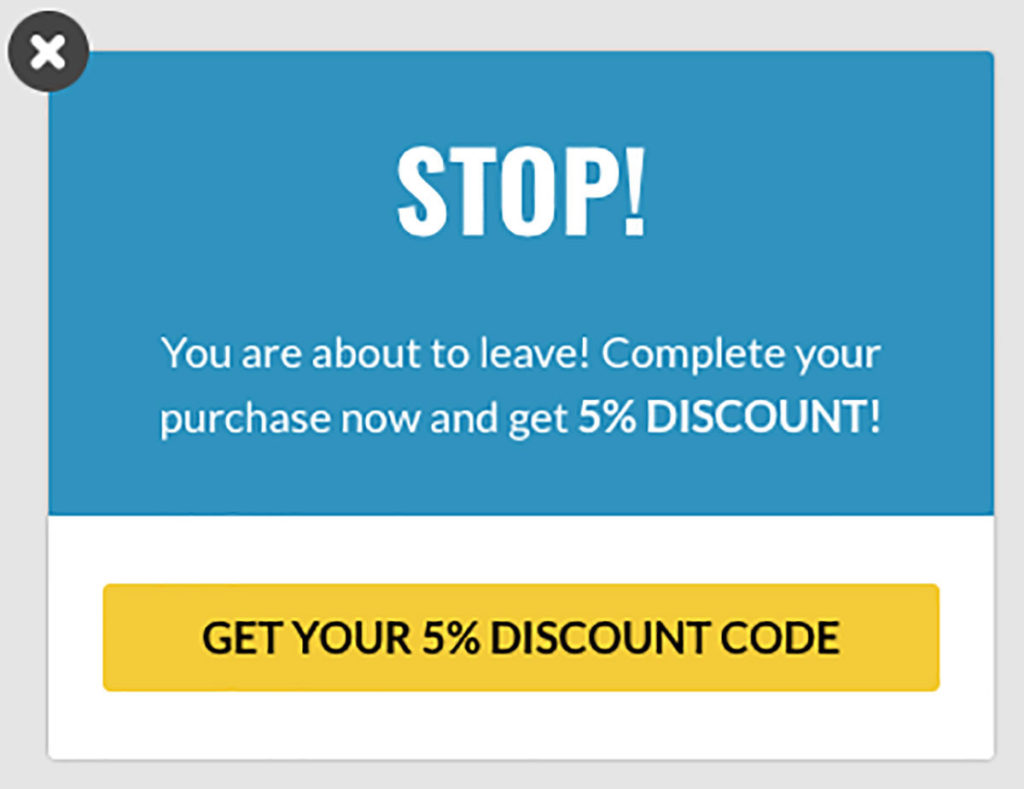
It’s important to mention that you should use discounts in your cart sparingly. If you constantly offer a discount on exit-intent in your cart, visitors will come to expect it and abandon just to get a discount and not pay full price.
Nicehair ran this campaign as an experiment for a limited amount of time, and their overall conversion rate was 44.76%. That’s almost half of abandoning visitors who returned to their cart.
Alternative: An alternative to offering discounts in your cart is to offer free shipping on orders with an average order value above a certain amount.
According to HubSpot, 24% of shoppers are ready to spend more to qualify for free shipping, so this is a great way to increase the average order value.
Here’s how you can ask abandoning visitors to add items to their cart using Sleeknote:

6. Reward Referrals from Existing Customers
If you’re like most business owners, you know the importance of referral marketing.
The problem, though, is few build a predictable and repeatable referral system into their marketing.
And the numbers couldn’t be more revealing.
According to ReferralCandy, 83% of satisfied customers are willing to refer products and services. Yet, only 29% actually do.
Discounts, then, are an effective incentive for inviting customers to refer loved ones.
Here’s a recent email I got from Bonobos:

By offering discounts to both the referrer and the referral, Bonobos incentivize both parties to buy something. Win. Win.
Alternative: Again, there are alternatives to offering a discount in exchange for referrals. You can offer to send a free gift or a product sample when a customer has referred friends.
Here’s an example from Bombas who offers two free pairs of socks for every customer they refer:
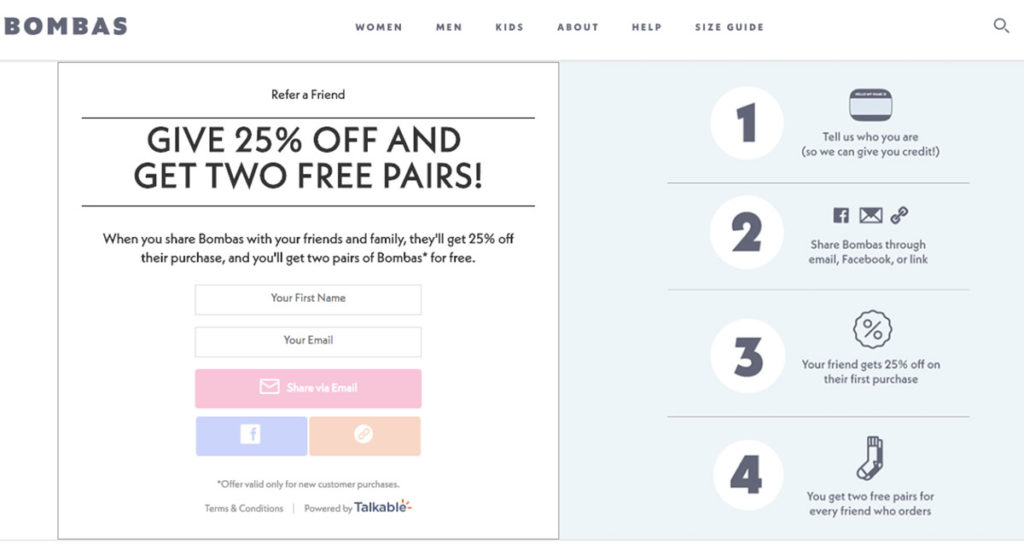
Note: You don’t need to add a discount for referrals. Eighty-one percent of consumers trust their friends and family’s advice over any other incentive.
So give customers a reason to refer friends and family, and that alone will get you more business.
7. Retarget Visitors with a Custom Offer
The best way to drive more sales is to target your visitors with personal messages.
Whether it’s in your marketing emails, ads, or on-site messages, personalization is the way to go.
If you’re using Facebook ads to drive traffic to your site, you can create a custom offer for visitors who come to your site through a Facebook ad.
Smart, right?
Get creative with the copy and make sure this visitor segment knows the offer is exclusive for them—and them ONLY.
Here’s a quick example I made showing how you can do that:
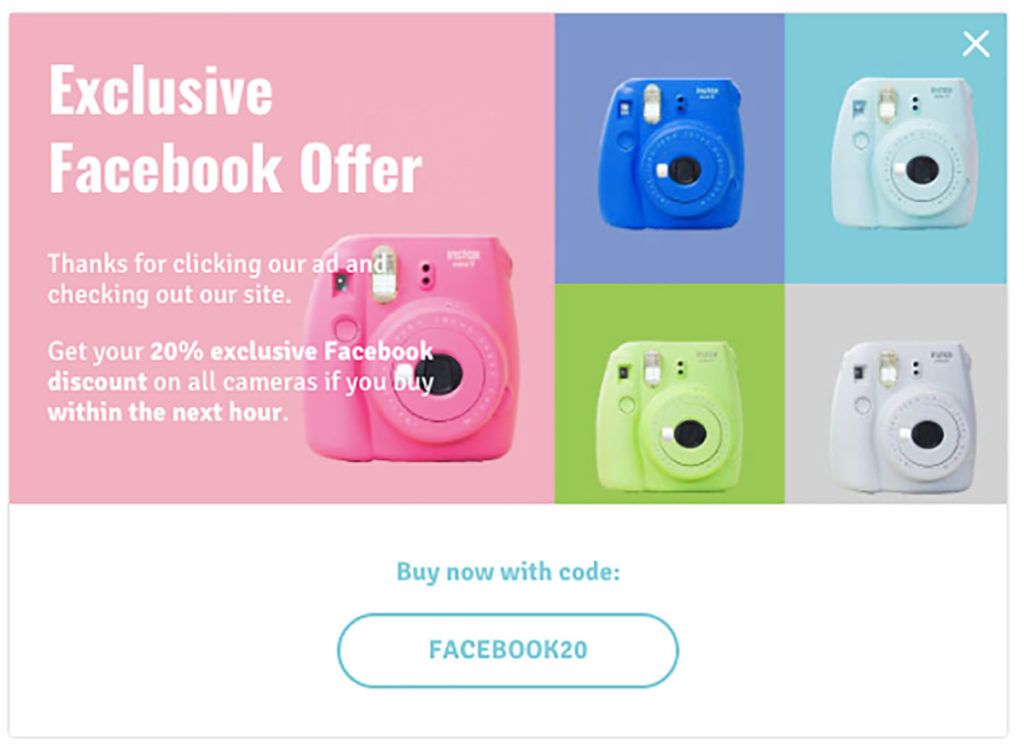
Alternative: You can also offer a content upgrade that’s relevant to your Facebook ad and ask for an email address in exchange.
Let’s say you have a Facebook ad promoting a new line of eyeshadow.
A user clicks through to your site but isn’t ready to buy. Offer them a free guide on how to apply different types of eyeshadow for different looks and occasions. Then, include product recommendations from your new product line in the guide.
Here’s what a campaign like that could look like:
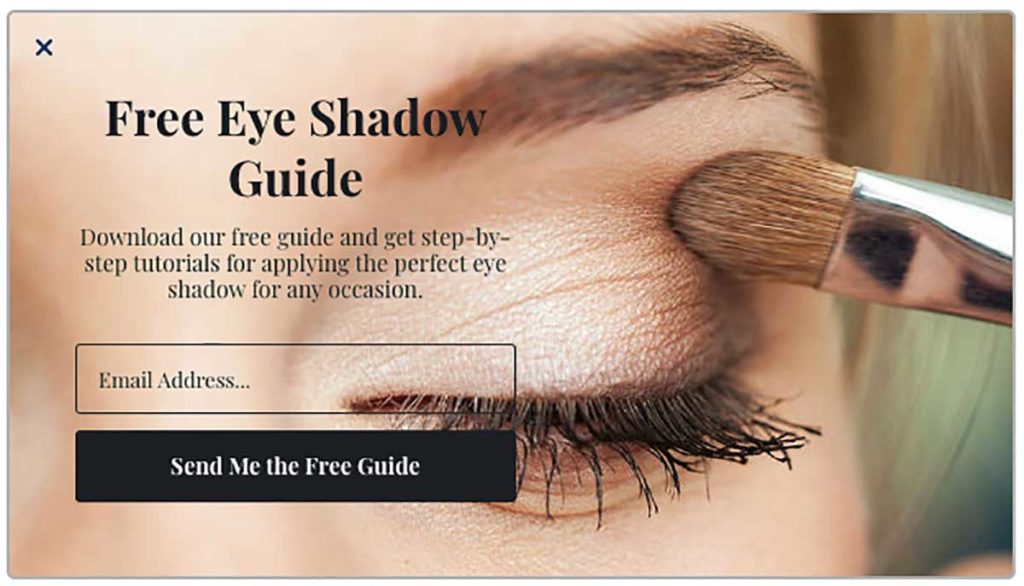
8. Offer Discounts on Subscriptions
There are many ways to improve customer retention.
But one of my favorites is creating a subscription for your product.
Today, consumers are looking for convenience above all. And the quicker and easier they can get their hands on what they need, the better.
In fact, brands like Harry’s, MeUndies, and Brushbox, to name a few, now offer subscriptions to help improve customer retention.
If you want to incentivize prospects to choose a subscription over a one-time purchase, you can offer a discount on your subscriptions.
Most companies can afford to do this because they know it will increase their customer lifetime value (LTV) and recoup it on the back end.
MeUndies are a good example of a brand that understands the importance of continuity. In fact, they recently moved to a membership model to grow their business faster.
On their product pages, MeUndies highlight the benefits of their subscription three times, which includes a discount and exclusive membership colors:
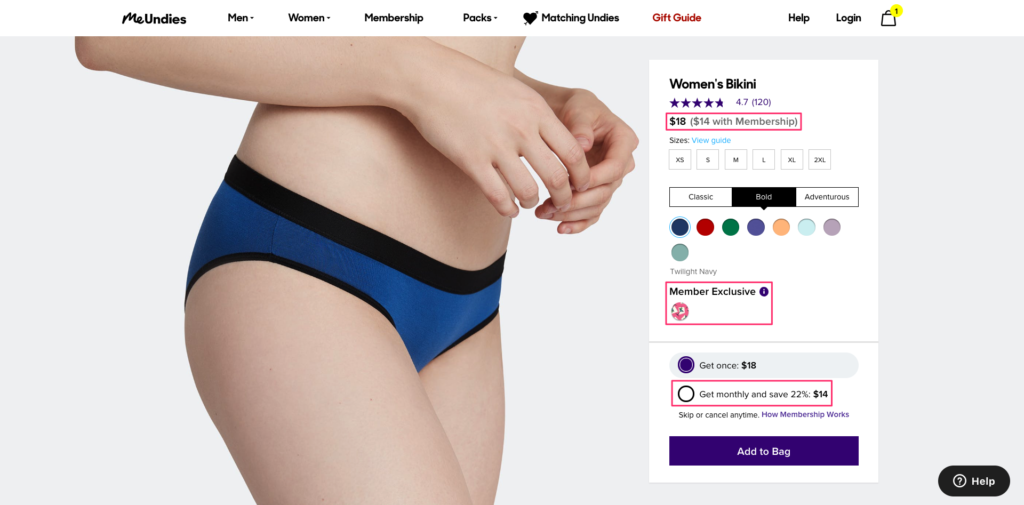
If you only offer subscriptions, you can use discounts to upgrade monthly subscriptions to annual subscriptions.
At Sleeknote, we offer a 20% discount on annual plans because we know customer’s LTV increases if they choose that option.
Alternative: There are many ways to drive users to choose a subscription over a one-time purchase without offering a discount. You can offer free shipping, or focus on convenience for the user for choosing a subscription.
Here’s an excerpt from BeanBox’s value proposition focusing on convenience for the buyer:

9. Follow Up with Event Attendees
If you host or attend events to promote your products, there’s a lot of potential in following up with attendees after the event.
Send an email to attendees where you promote some of the products you promoted at the event. Make sure to link to a page on your site with these products.
Track the link and then add a unique campaign to your site for these visitors specifically and promote your discount.
Here’s what that could look like:
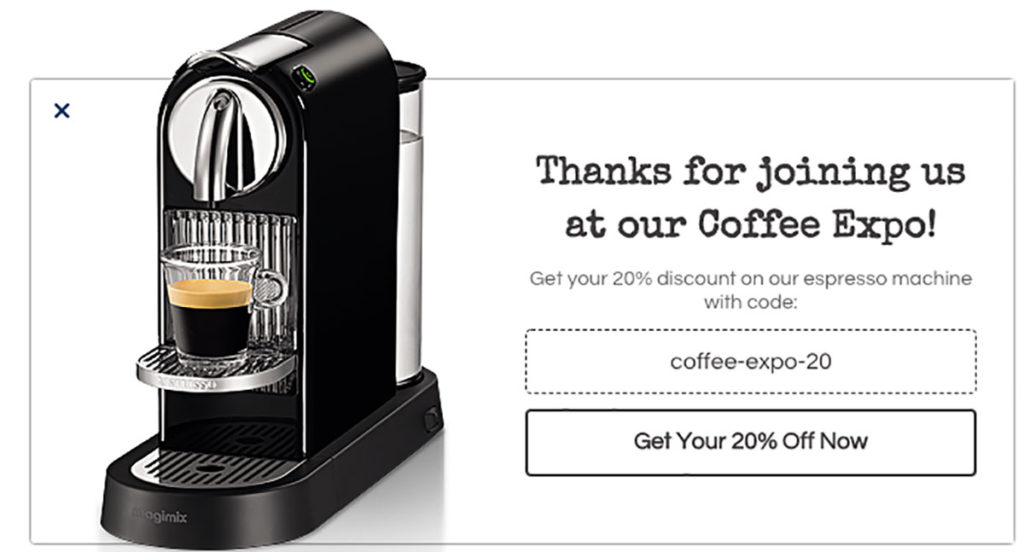
When you only discount products from the event and not all your products, the offer becomes more personal and exclusive, and therefore more attractive to this specific visitor segment.
Alternative: You can also offer a free sample or gift when your event attendees enter your site.
Here’s it’s a good idea to limit the free gift to specific product orders, or orders with a higher average value, as Poo Pourri does:
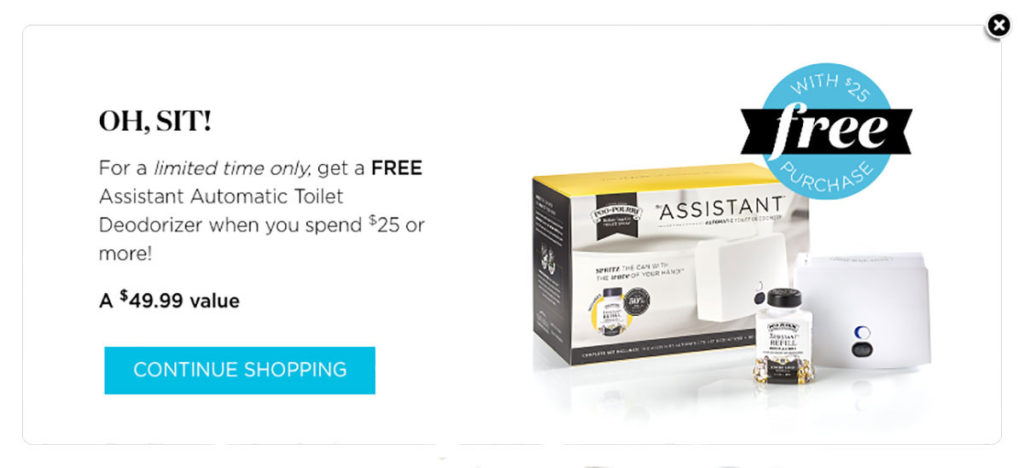
FREE DOWNLOADABLE BONUS
Want More Conversion Rate Optimization Strategies?
Get access to our free CRO toolkit and skyrocket your organic traffic, on-page conversion rate and more (includes resources not found in the blog post).
Download CRO Toolkit Now →

Conclusion
Using discounts is all about balance. If you use them sparingly and offer them at the right place, at the right time, to the right prospect, you’ll see great results.
Keep the user journey in mind, and don’t offer discounts to everyone and everywhere.
And remember, you shouldn’t use discounts just because everyone else does it. There’s always an alternative if you decide you don’t want to discount your products.
Do you discount your products? And what are your experiences? Or maybe you’ve tried an alternative not mentioned in this post? Leave a comment below.
[ad_2]
Source link